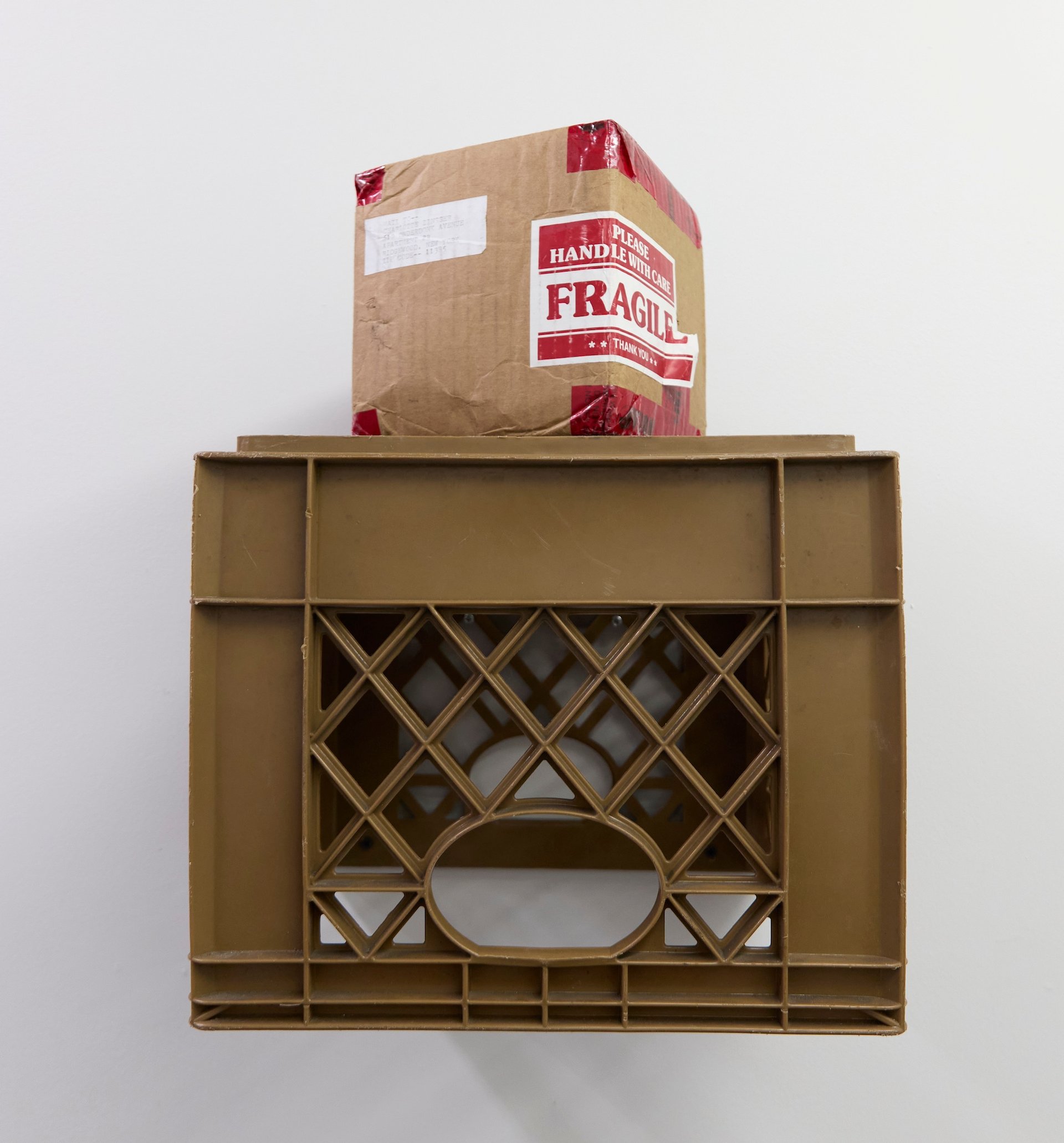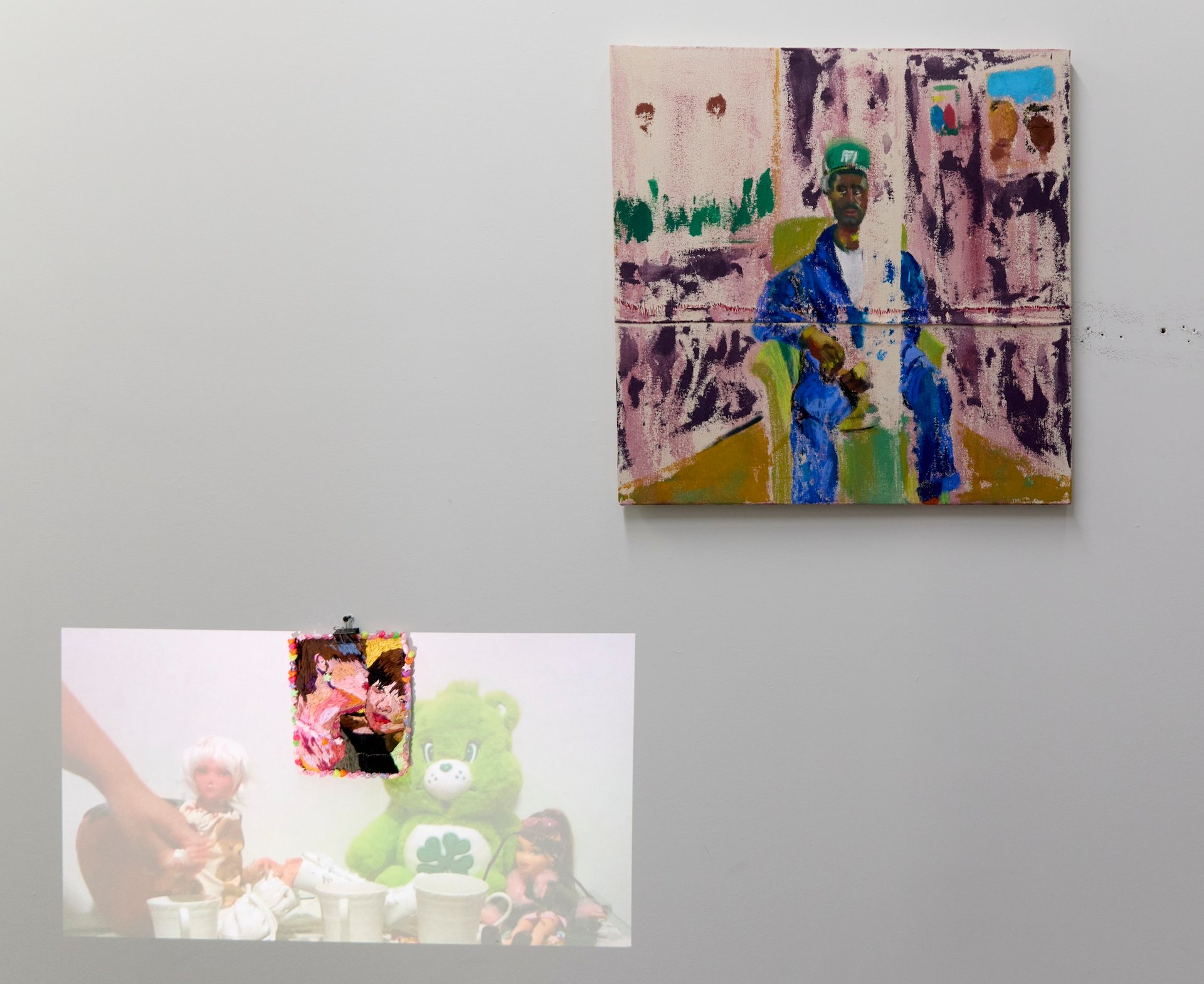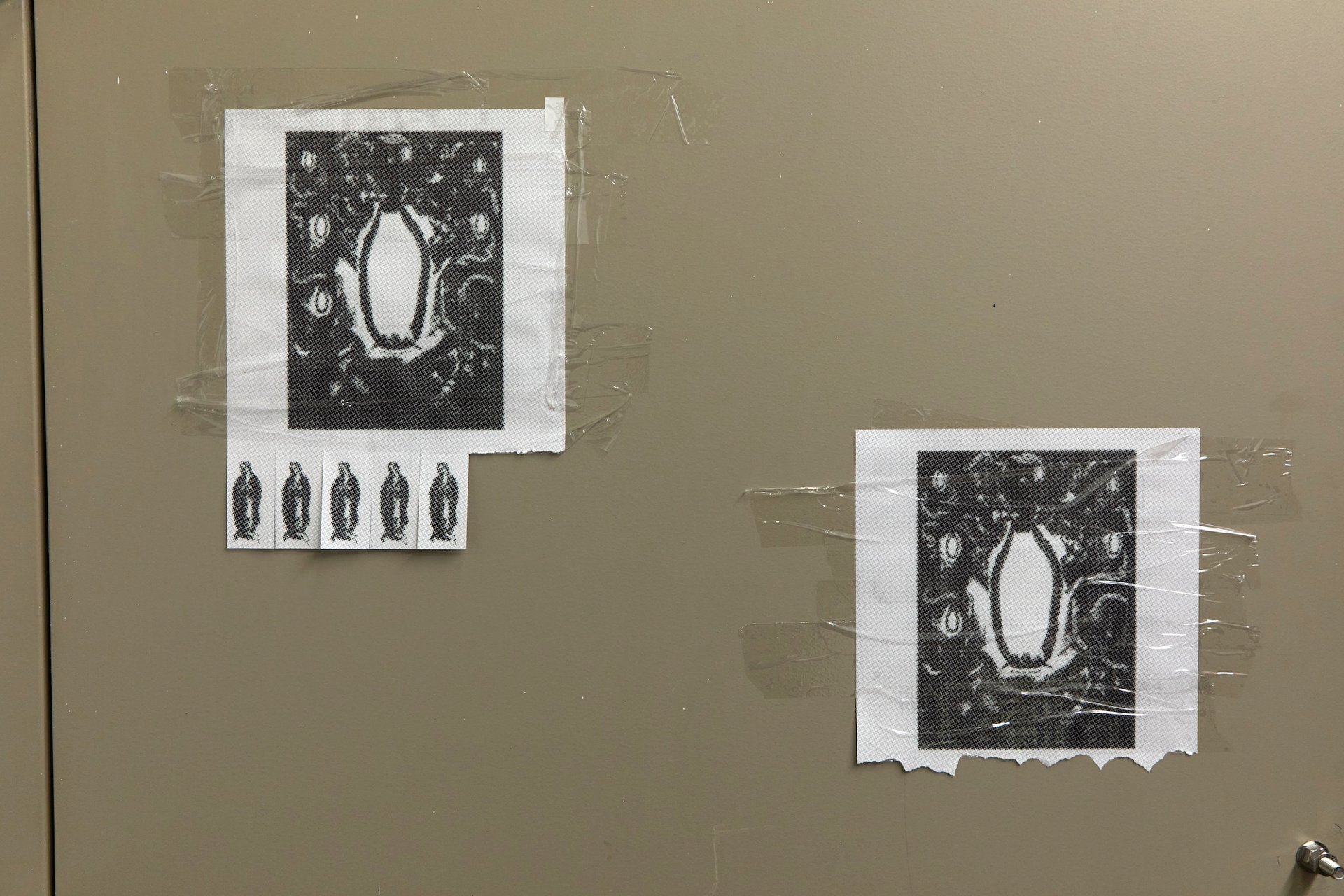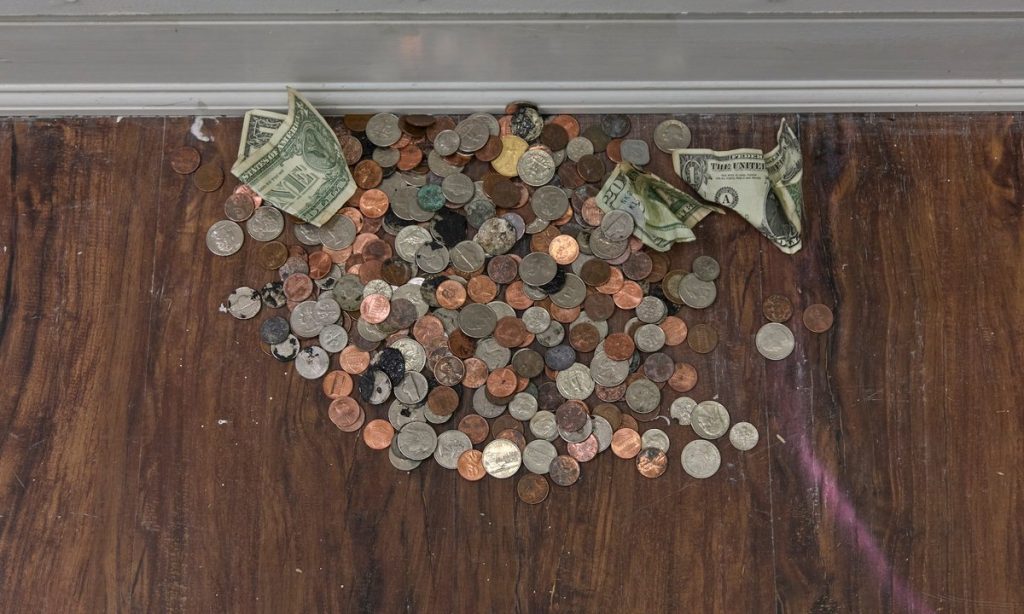If you ever contemplated buying art but were put off by a steep price, Haul Gallery’s group exhibition Pay What You Want (until 9 February) proposes a cheeky alternative. For each work in the show, buyers can name their own price to acquire it, on a first-come, first-serve basis, with $1 as the price floor. But there’s a catch: the contributing artists were prompted to make pieces that are physically or conceptually difficult to sell. This provocation calls attention not just to art’s love-hate relationship with commerce, but also to its role in building community.
The artist duo behind Haul, Erin Davis and Max C. Lee, have been unusually forthcoming about the Brooklyn-based gallery’s finances since its 2019 founding. The gallery website contains an itemised list of Haul’s monthly operating expenses, and most previous exhibitions offered works at a range of price points. The goal has been to provide greater transparency in an industry often shrouded in secrecy, as well as to “expand what it might look like to be an art collector”, Davis says. “We’re trying to operate on a different model,” he continues, “one not reliant on wealth.”

Charlotte Zinsser, Box, Which Should Not Be Tampered With, 2025 Courtesy Haul Gallery, Brooklyn, New York
Pay What You Want is the gallery’s first exhibition since being incorporated as a 501c3, a US nonprofit organisation, which makes the exhibition’s unorthodox conceit a fitting gesture. Lee says that, before the transition, they liked to joke, “We’re not a non-profit but we don’t make any profit.” Importantly, that is by design. “I work at a blue-chip gallery,” Lee says, “and Erin used to work at one, so we know how to make money selling art, but have chosen not to.” Instead, they prioritise supporting other artists—through residencies that culminate in solo exhibitions, through lopsided sales splits (previously, 70% of Haul’s sales went to the artist; going forward, 100% will) and, in the future, through a stipend programme and publication platform.
What sort of work can be found in Pay What You Want? Charlotte Zinsser’s Box, Which Should Not Be Tampered With (2025) consists of a heavy brown box, sealed shut and marked “Fragile”, whose unspecified contents cannot be discovered without opening—and thus destroying—the work. Noah Dillon’s A Labor Theory of Value (2024-25), a grimy pile of coins found by the artist, makes the theme of money explicit. The pile contains slightly more than $40 worth of US currency, along with tiny amounts of other currencies, potentially allowing its purchaser to arbitrage a small profit. The piece did indeed sell for a lower price than its currency value in the exhibition’s opening hours, but the purchaser donated the difference to the gallery rather than pocket it.

Installation view of Pay What You Want at Haul Gallery including, at right, Zakariya Abdul-Qadir’s Bound by threaded dreams (2025) Courtesy Haul Gallery, Brooklyn, New York
The exhibition’s only painting, Zakariya Abdul-Qadir’s Bound by threaded dreams (2025), a rough-hewn portrait of a seated man, utilises unstable materials in a bid to render the work less desirable to acquire. The artist used non-archival paint applied to an unprimed support made from two canvases stitched together like the seam on a baseball; each element will hasten the work’s deterioration over time. The painting nonetheless sold during the opening (for $300), but its impermanence undermines its potential to be an asset whose value appreciates in perpetuity.
Haul’s punk indifference to the profit motive manifests not only in the work it shows but also the community it creates. “The most important thing about Haul is Max and Erin,” says the artist Charlie Perez-Tlatenchi, a current resident at the International Studio & Curatorial Program participating in Pay What You Want with Piezas del cielo (2017-25), a series of works in the form of Xeroxed pull-tab flyers. “Once you meet them, you understand their mindset and energy.” The feeling is mutual: after the inclusion in 2018 of Perez-Tlatenchi’s work in a series of shows organised by Davis and Lee before Haul’s founding, they became fans of his independent record label, Pastel Voids, and a friendship developed based on shared creative pursuits.

Charlie Perez-Tlatenchi, Piezas del cielo, 2017-25 Courtesy Haul Gallery, Brooklyn, New York
Such idealism can be hard to maintain given the economic realities of New York City in the 2020s. That is why, Davis says, “we began to look at alternative financial models for how we could survive as a gallery”. Lee cites the Patreon subscriber-backed, art-adjacent content creators New Models and Do Not Research as “direct inspiration” for the “community-focused methods of funding” they plan to explore as a non-profit. However, unlike those virtual arts communities, Haul has the blessing and curse of maintaining a physical space, which adds to its operating costs but promotes a sense of togetherness through in-person programming.
In the arts, appeals to community values can sometimes be public relations cover for ulterior motives. But the community Haul develops is the real thing. The gallery’s transparency about its finances, along with its inclusive approach to sales, welcomes like-minded enthusiasts into the fold. Its supporters are also participants, stakeholders not just in a financial sense but a cultural one: people aware of money’s centrality to the art industry but who believe there needs to be room for institutions and practices not reliant on wealth.

Installation view of Pay What You Want at Haul Gallery Courtesy Haul Gallery, Brooklyn, New York
- Pay What You Want, until 9 February, Haul Gallery, Brooklyn, New York





